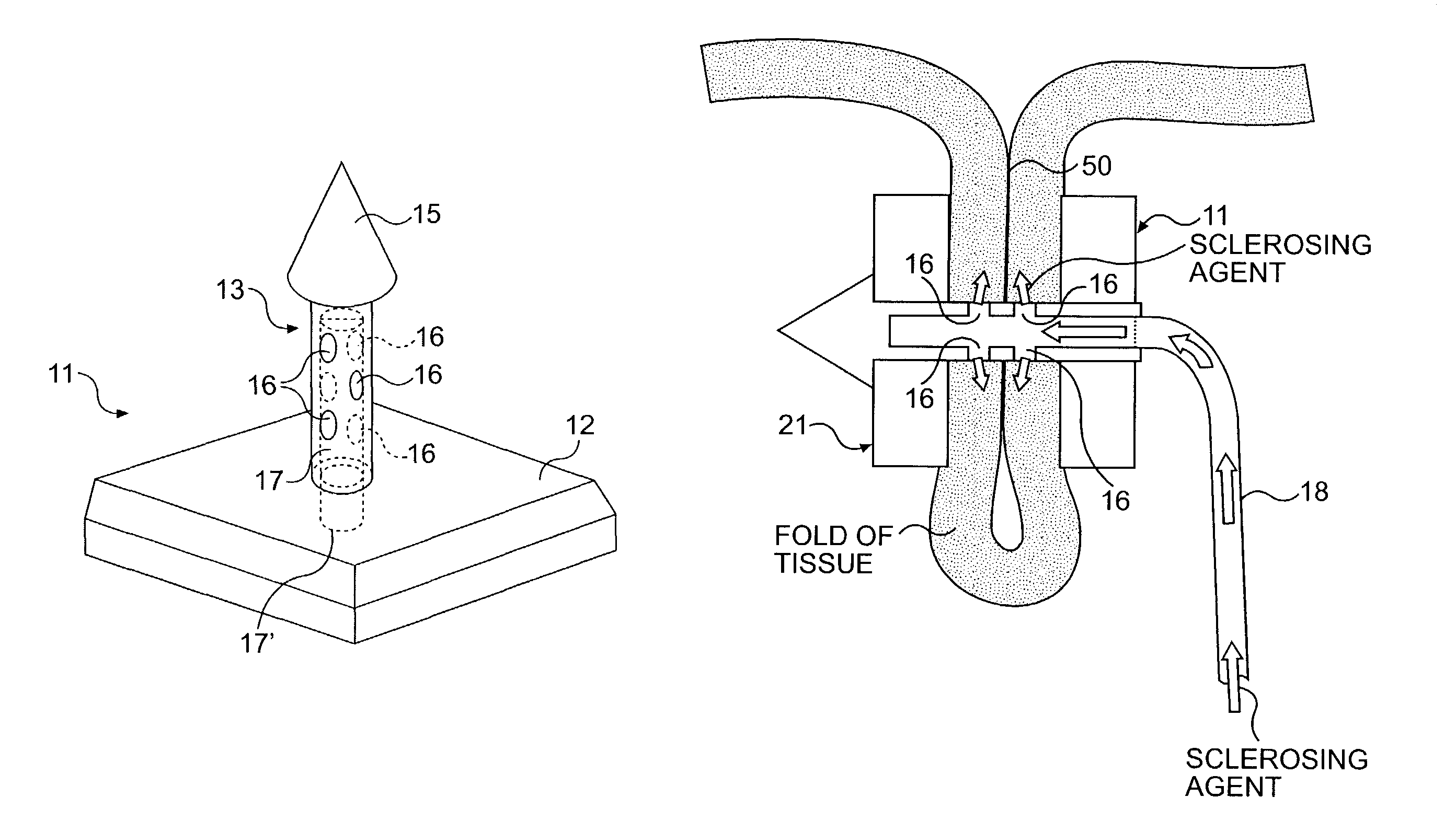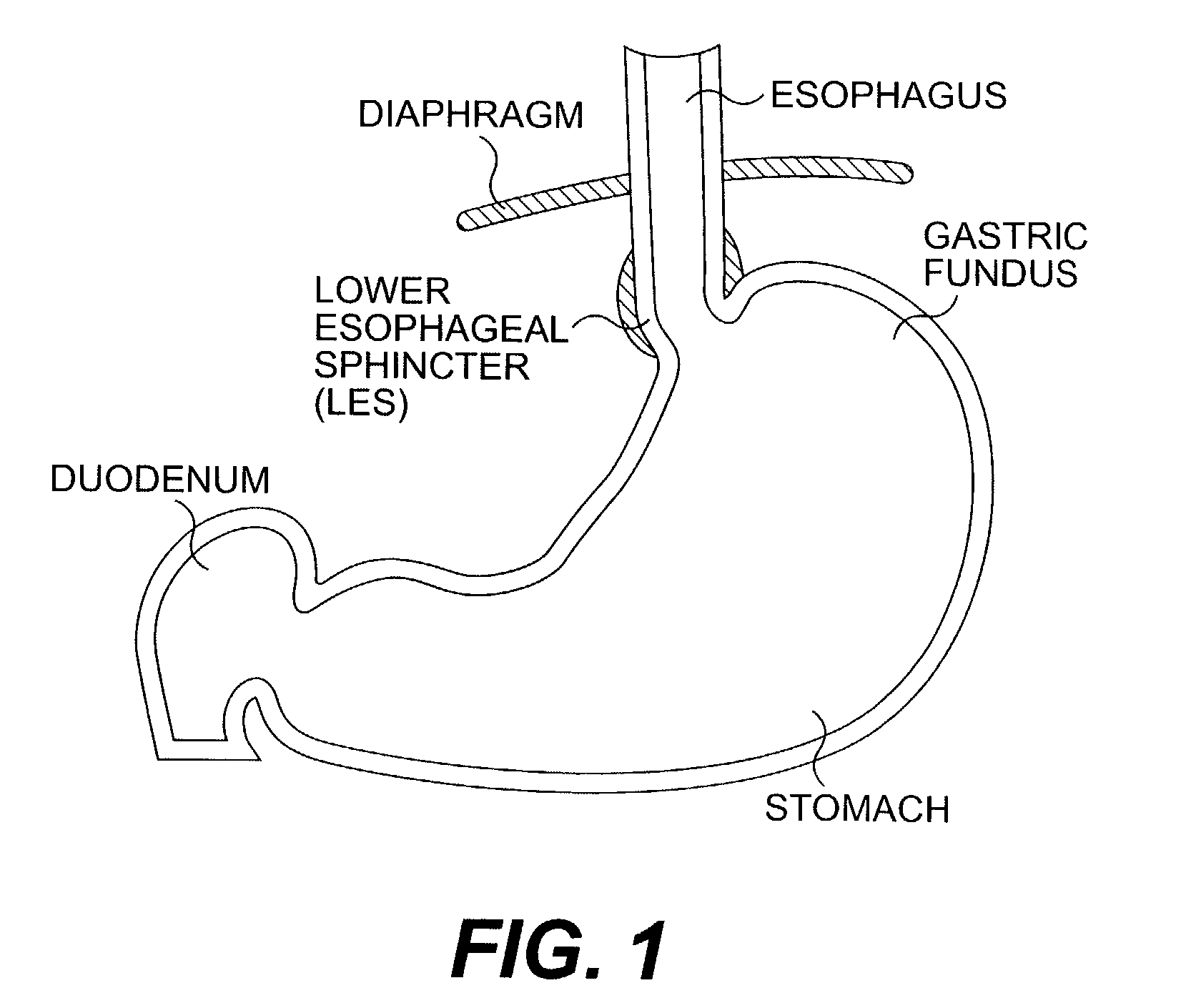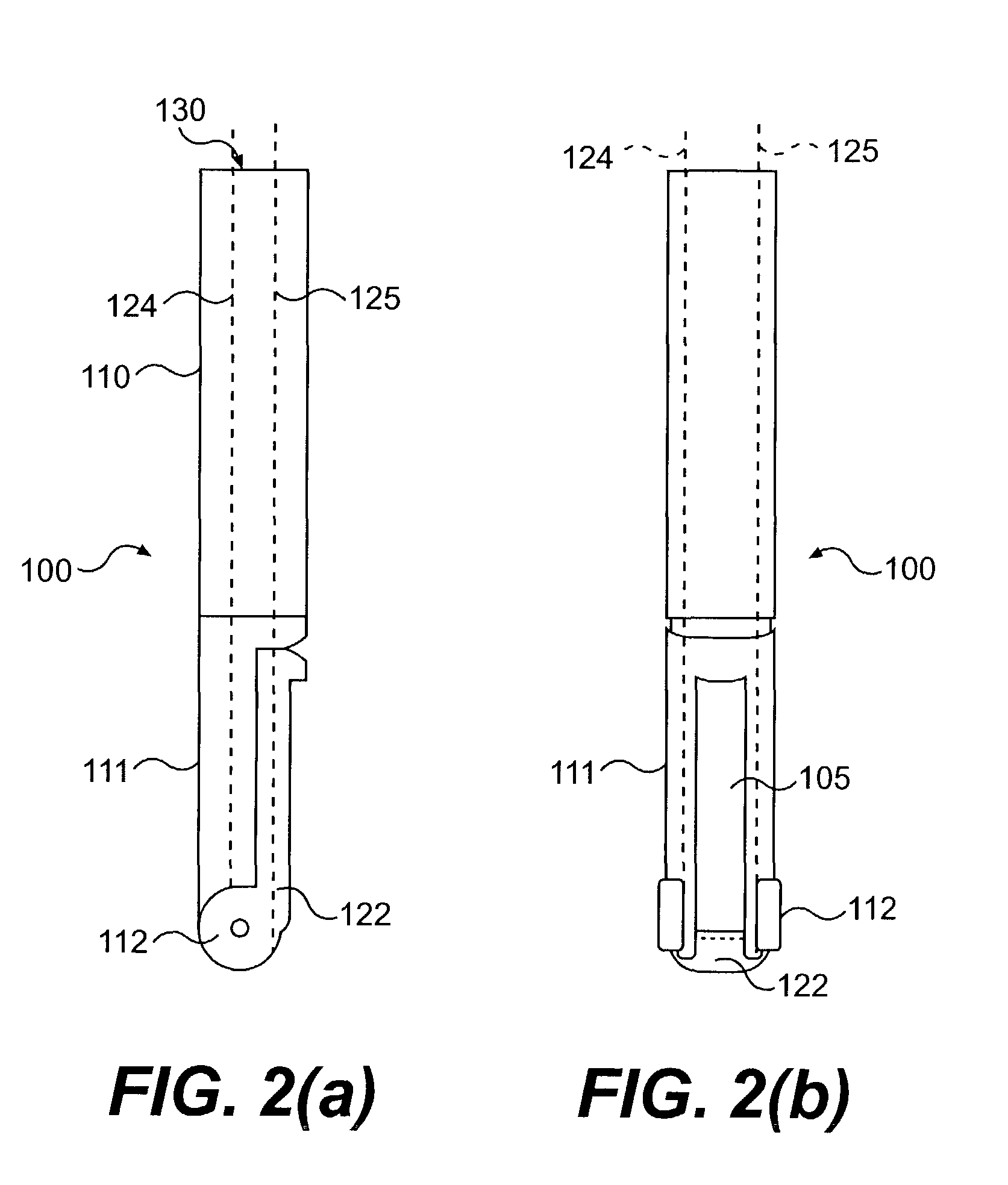Tissue fastening devices and processes that promote tissue adhesion
a tissue fastening and tissue technology, applied in the field of surgical fasteners, can solve the problems of abnormal function, inability to cure the disease completely, and occasional bouts of heartburn, and achieve the effect of increasing the area of the injection si
- Summary
- Abstract
- Description
- Claims
- Application Information
AI Technical Summary
Benefits of technology
Problems solved by technology
Method used
Image
Examples
Embodiment Construction
[0002]1. Field of the Invention
[0003]The present invention relates to surgical fasteners and, particularly, to tissue fasteners. Still more particularly, the present invention relates to tissue fasteners that promote tissue adhesion and prevent fastener migration, especially for use in a GERD fundoplication procedure.
[0004]2. Background of the Invention
[0005]Gastroesophageal reflux occurs when stomach acid enters the esophagus. This reflux of acid into the esophagus occurs naturally in healthy individuals, but also may become a pathological condition in others. Effects from gastroesophageal reflux range from mild to severe. Mild effects include heartburn, a burning sensation experienced behind the breastbone. More severe effects include a variety of complications, such as esophageal erosion, esophageal ulcers, esophageal stricture, abnormal epithelium (e.g., Barrett's esophagus), and / or pulmonary aspiration. These various clinical conditions and changes in tissue structure that resu...
PUM
 Login to View More
Login to View More Abstract
Description
Claims
Application Information
 Login to View More
Login to View More - R&D
- Intellectual Property
- Life Sciences
- Materials
- Tech Scout
- Unparalleled Data Quality
- Higher Quality Content
- 60% Fewer Hallucinations
Browse by: Latest US Patents, China's latest patents, Technical Efficacy Thesaurus, Application Domain, Technology Topic, Popular Technical Reports.
© 2025 PatSnap. All rights reserved.Legal|Privacy policy|Modern Slavery Act Transparency Statement|Sitemap|About US| Contact US: help@patsnap.com



